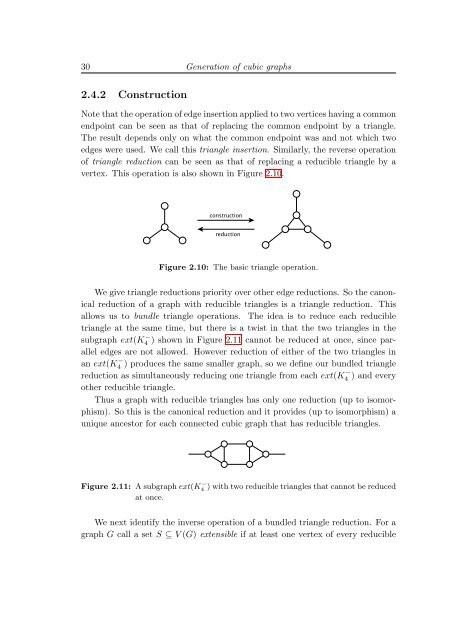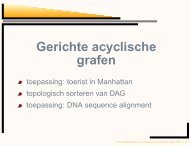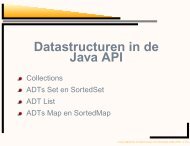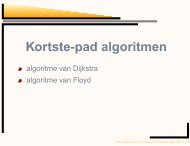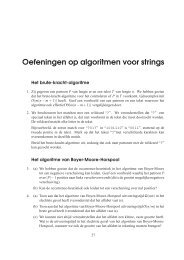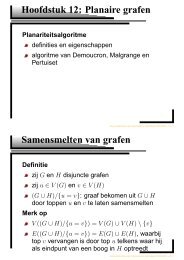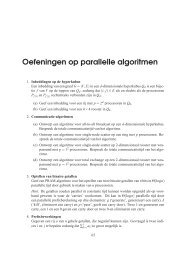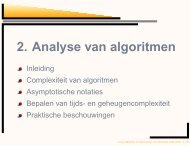Here - Combinatorial algorithms and algorithmic graph theory
Here - Combinatorial algorithms and algorithmic graph theory
Here - Combinatorial algorithms and algorithmic graph theory
Create successful ePaper yourself
Turn your PDF publications into a flip-book with our unique Google optimized e-Paper software.
30 Generation of cubic <strong>graph</strong>s<br />
2.4.2 Construction<br />
Note that the operation of edge insertion applied to two vertices having a common<br />
endpoint can be seen as that of replacing the common endpoint by a triangle.<br />
The result depends only on what the common endpoint was <strong>and</strong> not which two<br />
edges were used. We call this triangle insertion. Similarly, the reverse operation<br />
of triangle reduction can be seen as that of replacing a reducible triangle by a<br />
vertex. This operation is also shown in Figure 2.10.<br />
Figure 2.10: The basic triangle operation.<br />
We give triangle reductions priority over other edge reductions. So the canonical<br />
reduction of a <strong>graph</strong> with reducible triangles is a triangle reduction. This<br />
allows us to bundle triangle operations. The idea is to reduce each reducible<br />
triangle at the same time, but there is a twist in that the two triangles in the<br />
sub<strong>graph</strong> ext(K4 − ) shown in Figure 2.11 cannot be reduced at once, since parallel<br />
edges are not allowed. However reduction of either of the two triangles in<br />
an ext(K4 − ) produces the same smaller <strong>graph</strong>, so we define our bundled triangle<br />
reduction as simultaneously reducing one triangle from each ext(K4 − ) <strong>and</strong> every<br />
other reducible triangle.<br />
Thus a <strong>graph</strong> with reducible triangles has only one reduction (up to isomorphism).<br />
So this is the canonical reduction <strong>and</strong> it provides (up to isomorphism) a<br />
unique ancestor for each connected cubic <strong>graph</strong> that has reducible triangles.<br />
Figure 2.11: A sub<strong>graph</strong> ext(K − 4 ) with two reducible triangles that cannot be reduced<br />
at once.<br />
We next identify the inverse operation of a bundled triangle reduction. For a<br />
<strong>graph</strong> G call a set S ⊆ V (G) extensible if at least one vertex of every reducible


